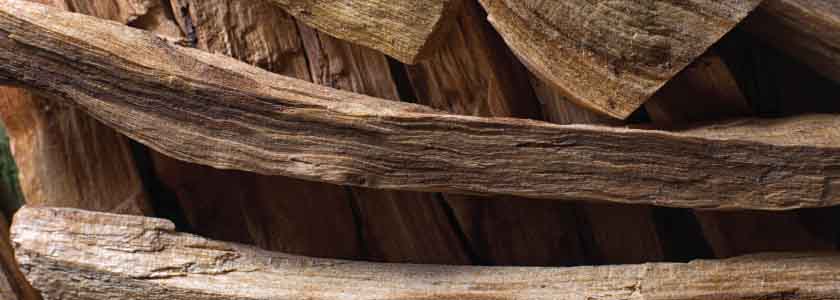Investigating Latin America’s ‘holy wood’—the palo santo

For centuries, residents of some parts of Central and South America have turned to palo santo for healing and health.
Palo santo, Bursera graveolens, is a medium-sized tree that can grow up to 60 feet high. It has a straight trunk and small buttresses, and female trees bear showy pink-to-red long ribbons of flowers that bear fruit. The tree grows in seasonally dry tropical forests from Mexico south to Peru, and also on the Galápagos, and it belongs to the same family as frankincense and myrrh.
Genetics is helping to unravel some of the mysteries of the palo santo—Spanish for “holy wood.” Despite its growing popularity, the species is at risk because of threats to its habitat, and an understanding of its genetic makeup may help researchers sustain its numbers.
Palo santo’s home—dry tropical forests—are at risk
Palo santo wood is used for carving and incense. In healing and purification ceremonies, the wood is slowly burned much like a stick of incense would be—the smell has been described as reminiscent of pine, lemon, or generally lightly woodsy. The wood is not psychoactive but is noted for its ability to purify and provide positive energy.
Dry tropical forests have been characterized as “overlooked and under threat,” with chief menaces being fire and the invasion of grasses. The growing popularity of using palo santo wood for healing and purification in North America and Europe, and threats to the forests from which the trees come, has many suggesting alternatives.
Growing a palo santo tree is not easy. Seeds are produced by trees that are at least 6 years old, which typically are consumed and passed by pigeons. The palo santo wood used in rituals can only come from the densely resined heartwood of trees, which grow to maturity then die naturally.
Is Palo Santo Endangered?
“Palo santo isn’t endangered,” said The New York Times, “but its dry tropical forest habitat is threatened.”
Study shows potential for breast tumor growth inhibition
A study of the trees on the Galápagos found that genetically similar trees fell into two genealogical groups that did not strictly adhere to island- or taxon-based membership, and that “genotypic admixture levels among morphologically intermediate individuals do not indicate widespread hybridization.”
A subsequent study from a team of American and Cuban researchers found that the essential oil of B. graveolens was dominated by limoncene and that it inhibited the growth of MCF-7 breast tumor cells.
Looking at palo santo in Mexico, a 2004 study noted that genetic influence between different trees could signal that there are multiple species.
An ongoing study by a researcher at George Mason University is seeking to find out if the palo santo tree consists of multiple distinct species.
In that study, which received crowd-sourced funding and is being conducted in an open notes fashion, PhD candidate Elizabeth Collins plans to sequence the DNA using ddRAD-Seq from 192 of the trees and identify new and possibly endangered palo santo trees.
“The palo santo tree is currently considered a single species across its wide range (Mexico to Peru). I and other botanists have observed morphological differences that indicate palo santo may comprise multiple species, some of which may be endangered due to deforestation,” Collins wrote on Experiment.com. “I will examine morphological and genetic differences from samples I have collected to test this hypothesis. Not only are there potentially undiscovered species, but the genetic diversity in populations of palo santo has never been quantified. This information will help guide reforestation efforts using palo santo.”
Collins had hoped to submit the results of her study for publication in August, but the events of 2020 so far have put a kink in those plans, with specimens stuck in Ecuador and her lab closed.
Meanwhile, markets in the U.S. are flooded with “palo santo”—though it’s not clear how much of it is authentic and if any of it is harvested prematurely or smuggled illegally. Collins’ recommendation?
“Get to know the companies you are buying your products from,” she wrote, “and ask them about their sources.”


 Processing
Processing
